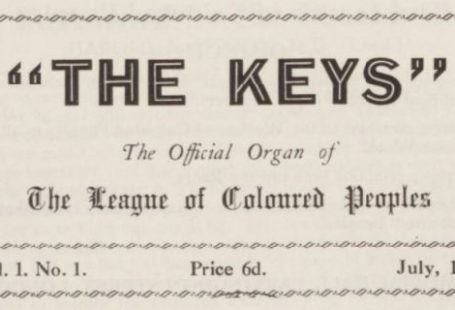With a target of 4.25 million newspaper pages to reach for the launch in late 2011, the Stakhanov-like workers (up to 8,000 newspaper pages a day are being digitised) who are doing the scanning at the British Library’s Colindale site, continue to find articles of great interest and quirkiness.
In short, ‘all human life is here’: from a man who decided one day to walk round the world in an iron mask, to bullet-stopping corsets and the art of wide-sleeved shoplifting. These are just three of the quirky stories that offer us a glimpse of how some of our more colourful 19th Century ancestors spent their days – though the archives contain thousands of more stories in a similar vein.
However, it’s not just the ‘life’s rich tapestry’ stories which capture one’s imagination (fascinating as they are), as the composition of the newspapers themselves also have amazing tales to tell. For instance, we have black-bordered newspaper pages to mark the death in 1837 of King William IV. Jumping forward just over a century, the digitisers have also found that some of the old books of newspapers have been damaged by shrapnel – a legacy of the ‘London Blitz’.
The newspapers have been digitised and made searchable through a process of Optical Character Recognition (OCR), which enables a searchable index of all recognised words to be built. As a result of using OCR technology in the digitisation process, the search feature on the website will be very powerful and accurate. The intuitive search interface on the website will allow visitors to filter searches by keyword(s), publication title, location and date range.
Searching the archive is free. To view an image, you can purchase time limited pay-per-view credits or opt for an unlimited annual subscription. Visitors to the British Library sites in London will be able to use the website for free.
While the British Newspaper Archive will be of interest to anyone interested in history, it will be especially popular with genealogists. In particular, the family notices in these old newspapers will be invaluable to researchers who are looking to find out more about their ancestors. Indeed, the benefits of using old newspapers in genealogical research was recently highlighted in three ‘Who Do You Think You Are?’ programmes, when Richard Madeley, Len Goodman and Tracy Emin, all gained an in-depth insight into the lives of three family ancestors via two newspaper stories and an obituary.
At launch, the majority of the newspapers will be from the 19th Century. However, as scanning and digitisation progresses, the site will grow to span over 250 years of UK newspapers.
For the launch of the www.britishnewspaperarchive.co.uk website, there will be up to 4.25 million pages live on the site. Following the launch, thousands of pages will be added to the website on a daily basis.
If you would like to be kept informed about this project, you can follow us on Facebook and Twitter – you can also sign up for the email newsletter.




